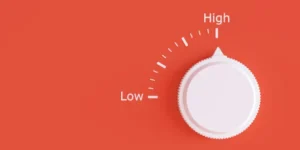Insights

Italian Consensus Dataset Analysis
Credit Benchmark’s consensus credit data provides an unparalleled view of Italian default risk through a robust framework of over 3,700 credit risk aggregates covering more than 18,000 Italian corporates, financial institutions, and funds. This dataset spans 20 regions, 70+ sectors, and multiple credit categories and company sizes, with historical depth dating back to 2017.
FILTER:
ARCHIVES:
SEARCH:

UK LDI Crisis: Pension Funds Cannot Rely on Sponsors
Pension funds are traditionally well capitalised and usually considered investment grade. Many of the companies that sponsor those funds are weaker credits, and a significant number are non-investment grade. This means that some of the largest DB pension funds in the UK cannot rely on their sponsors for cash support to meet margin calls.

COP27: Failure is Not an Option
COP27 needs to answer one question: is a declining standard of living the price of a sustainable future? Countries with weaker credit ratings will typically see more impact of climate change – with some exceptions. This report compares Sovereign credit against climate impact risk.

North American REITs: Industrial & Office Deteriorating
Global property is at a crossroads. The build-to-rent sector is strengthening as urban rents spike across the world, but rising mortgage rates are hitting starter and family home markets. In the corporate world, North American Real Estate Investment Trusts (REITs) have improved since early 2021, but Industrial & Office REITs are showing signs of turning down as hybrid working persists.

COVID Recovery: Running Out of Steam
The COVID outbreak led to widespread and rapid credit deterioration across multiple sectors; the subsequent recovery has been slower but has reversed much of the decline as economies have re-opened. But with war, supply shocks, inflation and rising rates, the improvement across multiple sectors has stalled and a growing number of them are turning down again.

Credit Volatility: Defaults Set to Rise, Africa and UK at Risk
Many credit portfolio managers expect default rates – currently around 2% – to be sharply higher in 2023, but the scale of the increase is still a major unknown. A useful metric to anticipate rising defaults is credit volatility – if this trends higher, credit category transition rates will increase, including transitions into default.

Q3 2022 Credit Review: Inflation and Credit Risk: Close to Boiling Point
Inflation dominated Q3 financial news, and the resulting short rate squeeze is biting while credit volatility is rising and the COVID recovery is running out of steam. Risk indicators are high in the UK, and oil and gas price volatility has brought havoc to Europe. In North America, weaker credit trends are appearing in several sectors. Believe it or not, there are some bright spots amidst this turmoil. This whitepaper elaborates on some of these trends and shows where credit could be headed next.